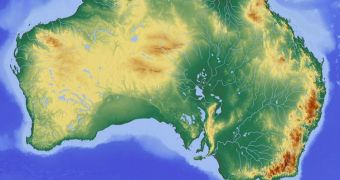A team of investigators and volunteers from the Monash University and Museum Victoria announce the discovery of important fossils in southeastern Australia. The bone fragments indicate that at least seven different species of meat-eating, theropod dinosaurs lived in the area millions of years ago.
Theropods is the general designation given to bird-like dinosaurs. The fossilized remains the group found were demonstrated to date back between 120 and 105 million years ago. For reference, dinosaurs disappeared some 65.6 million years ago, during the Cretaceous-Paleogene extinction event.
Discovering this amount of biodiversity was very unexpected, researchers with the team say. Details of their work were published in the latest issue of the peer-reviewed, open-access scientific journal PLoS ONE, which is edited by the Public Library of Science.
The research team is based both at the Monash University School of Geosciences, and Museum Victoria, and was led by Honorary Research Fellow, Dr. Tom Rich. Experts and volunteers searched for fossils in the Otway and Stzelecki Ranges of south Victoria.
Experts Lesley Kool, Dave Pickering and Professor Pat Vickers-Rich were also part of the team. “We had not expected to find fossils from such a large range of dinosaur species in this area,” Rich says.
“The fossils we have collected range from tiny, cat-sized killers to Australia’s version of T. Rex, a nine-meter (30-foot) long predator with powerful arms and razor-sharp claws,” the expert goes on to say.
“In total, 1,500 isolated bones and teeth of various kinds of dinosaurs have been found in Victoria, Australia so far. Their meaning is only beginning to be unraveled by detailed study and comparisons with other fossils world-wide,” Rich explains.
According to geologists, Australia was part of the Antarctic Circle when these dinosaurs lived. Despite the low temperatures, the area featured an abundance of diverse, small predators, very similar in appearance to the famous Velociraptor.
“One of the reasons for the success of small, theropod dinosaurs may be their warm-blood. As close relatives of birds, they had feathery insulation which helped maintain high body temperatures,” Rich says of the creatures.
“The cool, damp climate may also explain the discovery of the same dinosaur species in both Australia and the northern continents,” he concludes.

 14 DAY TRIAL //
14 DAY TRIAL //